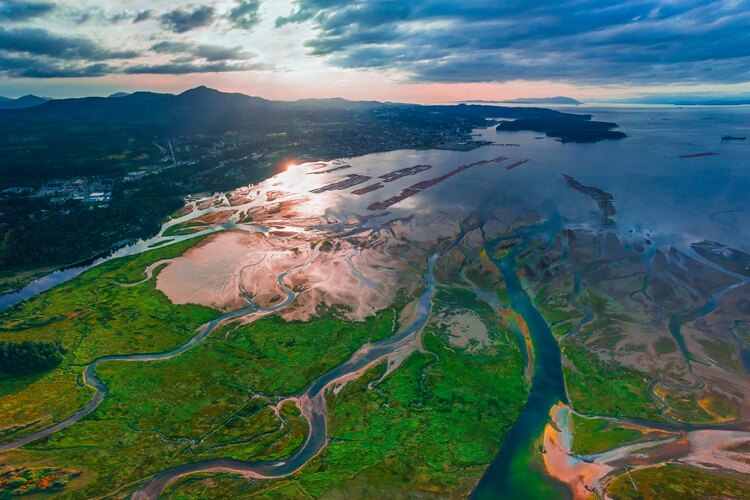
Human development has led to the destruction of a quarter of a million acres of estuarine habitat around the world over the past 35 years
By
That point where freshwater meets and mingles with salty sea waters can make for a unique, rich, but often rather overlooked habitat known as an estuary. Anything living in an estuary environment has to be super tough and able to cope with both fresh and salt waters as well as big tidal movements leading to a constantly evolving environment. But despite being such a hard neighbourhood to live in, plenty of animals, from mudskippers to saltwater crocodiles, do call estuaries home either on a permanent or a temporary basis. Estuaries are also critically important nurseries for many fish species, including many of those that we like to eat. It’s estimated that in the US estuaries provide a habitat for over 75 per cent of the nation’s commercial sea catch.
Estuaries also bring us other benefits. They act as giant filters, sifting silt and pollutants out of river water before it enters the ocean. They sequester carbon and salt marsh grasses, helping to stabilise shorelines and prevent erosion. They also help to absorb flood waters and dissipate storm surges. Plus, they act as natural, safe harbours for boats and allow the ocean-to-river shipping. Sum all of this up, and it’s easy to see that without estuaries, our coastlines would be very different and far less biologically rich places indeed.
And that makes the results of a study published this month in the journal Earth’s Future, which says that worldwide 44 per cent of estuaries have been directly altered by humans and that, over the past 35 years, land reclamation activities have converted a quarter of a million acres of estuary into urban land or agricultural fields. This amounts to 20 per cent of all estuary loss. Much of this loss has occurred in rapidly developing countries when construction and development projects were underway but that conservation laws were not yet strictly enforced.
‘Estuary change is really interesting, especially in 20th century, because estuaries have been altered by humans by the construction of estuarine dams and land reclamation,’ said Guan-hong Lee, a geoscientist at Inha University in South Korea who led the study. ‘When estuaries are modified by humans, the consequences for land loss are surprisingly huge.’
The study discovered that over the past 35 years high-income countries had lost little estuary area compared to rapidly developing countries. In most cases, that’s because estuary alteration occurred decades earlier when those countries were in developing, middle-income statuses. Today, in richer countries, the focus has moved from development to environmental conservation efforts.
According to Lee the findings of the study highlight the opportunities developing countries have to minimise the negative environmental and economic impacts of degraded estuaries while balancing their own economic and development needs.
Related articles:




